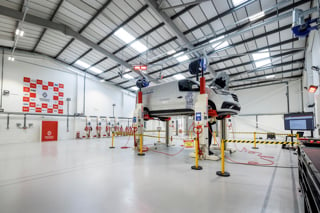Fleet operators need to adopt a proactive rather than reactive vehicle maintenance approach to keep operational downtime and cost management to a minimum as vehicle operating cycles get longer, says Jaama.
A robust online fleet management software system is therefore essential, it says, as technology will deliver efficiency improvements, financial and administrative savings and reduce risk exposure through driver and vehicle compliance management.
Jaama believes awareness needs to increase for car maintenance pro-activity for fleet decision-makers who are extending the life of their company cars in response to annual research from the Corporate Vehicle Observatory Barometer, which interviewed more than 4,500 managers across 15 European countries.
The research revealed that the proportion of organisations running their company cars for longer in the UK was greater than in other European countries - 21% of companies with under 100 employees and 24% of larger companies versus 11% and 18% respectively.
Martin Evans, Jaama’s managing director, said: “Fleet managers can graphically view exactly where vehicle costs deviate from a normal curve up to a spike via Key2’s ‘red’ and ‘green’ graphics and then identify the optimum time to defleet their vehicles.
“Fleet managers must be mindful that some drivers are more likely to take extra care looking after a new vehicle than an older vehicle, which can also affect operating costs rising at a faster rate towards the end of a vehicle’s life on fleet.”
Ensuring company cars are maintained in a safe and fit condition starts in-house with regular driver checks on tyre condition - tread and pressure - and fluid levels, notably oil. It then continues with any remedial action being undertaken as quickly as possible to prevent any ‘defect’ from worsening with ‘unsafe’ vehicles taken off the road for maintenance to be undertaken.
Evans said: “Many fleets use external suppliers for maintenance work. It is therefore critical that planned/preventative maintenance is undertaken in accordance with manufacturers’ recommendations.
“Dashboard warning lights on many company cars highlight, for example, that a vehicle service is due with frequency influenced by employees’ driving style rather than a period of time set by a car manufacturer.”
Critically, once armed with vehicle-related data it is essential that fleet operators use it as the basis for implementing change whether in respect of replacing expensive to maintain vehicles, changing operating cycles or using data to maximise vehicle uptime, says Jaama.
Evans said: “Too many fleet decision-makers become slaves to data capture and then do nothing with it. Collected data should provide a solid basis for taking remedial action in respect of vehicles. Plan, check, and act accordingly should be engrained in the minds of all fleet operators.
“Critically, do not ignore what data is highlighting. Failing to act on data that has exposed operational weaknesses could prove fatal in the event of an incident and also financially expensive in terms of remedial maintenance.”




















Login to comment
Comments
No comments have been made yet.